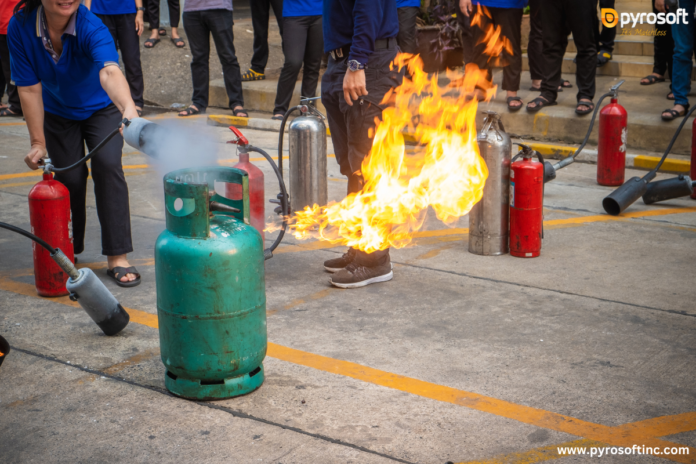In today’s fast-paced settings, it’s easy to neglect one of the most important components of fire safety. Every year, thousands of workplace fires occur worldwide, resulting in injuries, fatalities, and major property damage. However, with the proper knowledge and planning, many of these situations can be avoided or reduced. Fire safety training is very important in this situation.
Understanding Fire Safety Training
Fire safety training is a thorough program that teaches people about the dangers of fires as well as the steps they must take to avoid, contain, and properly respond to them. This training is required not only for certified safety personnel but for all employees in a workplace. After all, fire safety is a shared responsibility.
The Importance of Fire Safety Awareness Training
1. Prevention is Key: The most effective strategy to deal with a fire is to prevent it from starting in the first place. Employees receive fire safety awareness training, which covers topics such as malfunctioning electrical equipment, flammable materials, and incorrect combustible substance storage. Employees can dramatically lower the risk of fires by proactively detecting and dealing with these concerns.
2. Swift Response: In the event of a fire, prompt and immediate response is required. Fire safety training teaches personnel how to respond quickly to a fire emergency, including how to sound the alarm, safely evacuate the premises, and use firefighting equipment such as fire extinguishers. With adequate training, personnel can react quickly and efficiently, reducing possible damage and preserving everyone’s safety.
3. Reducing Panic: Fires can be chaotic and terrifying, causing panic among personnel. Individuals who have received fire safety training, on the other hand, are better able to remain calm and composed in the face of an emergency. Employers can make employees feel more confident and prepared by familiarizing them with emergency procedures and performing regular drills.
4. Protecting Lives: The primary purpose of fire safety training is to save lives. Employers can greatly minimize the risk of workplace injuries and fatalities by providing employees with the knowledge and skills necessary to prevent, respond to, and escape fires. In a fire, every second matters, and adequate training can make the difference between life and death.
Implementing Effective Fire Safety Training for Employees
1. Tailored Training Programs: Each workplace is unique, with its own set of fire hazards and concerns. As a result, fire safety training should be adapted to the unique requirements and characteristics of the workplace. This may entail identifying specific dangers in the environment and offering specialized training on how to reduce them.
2. Regular Refresher Courses: Fire safety training is a continuous process that must be reinforced and reviewed regularly. Employers should provide regular refresher courses to ensure that personnel are up to date on fire safety regulations and procedures. These refresher courses can assist to reiterate essential concepts, address changes in the workplace, and identify development opportunities.
3. Hands-on Training: While theoretical knowledge is necessary, hands-on training is as critical. Employees should be given the chance to practice using firefighting equipment, such as fire extinguishers, in a controlled setting. This hands-on experience can boost confidence and competence, ensuring that personnel are ready to respond in an actual emergency.
4. Clear Communication:
Effective communication is critical for ensuring that everyone understands their duties and responsibilities in case of a fire. Employers must disclose emergency procedures, evacuation routes, and assembly points to all employees. Fire safety training for employees should also understand how to report fire dangers or safety concerns in a timely manner.
The Business Case for Fire Safety Training
Investing in fire safety training is not just a legal duty, but also a sound business choice. Consider the benefits listed below:
Protecting Assets: Fires can cause severe property damage, requiring costly repairs and downtime. Businesses can preserve their physical assets and avert financial losses by preventing or reducing the severity of fires.
Maintaining Reputation: Workplace safety is a major concern for employees, customers, and the general public. A dedication to fire safety shows that a company cares about the well-being of its employees and stakeholders, which boosts its reputation and credibility.
Legal Compliance: Compliance with fire safety rules is required for enterprises of all sizes. Failure to follow these regulations may result in fines, penalties, and legal ramifications. Fire safety training helps businesses satisfy their legal duties while avoiding potential legal repercussions.
In conclusion, Fire safety training is an essential part of workplace safety. Businesses can make their workplaces safer and more secure by training personnel about fire threats, emergency protocols, and firefighting tactics. Investing in fire safety training is more than just ensuring compliance; it is also about safeguarding lives, assets, and reputation. In the face of fire hazards, education is certainly the greatest defense.

















